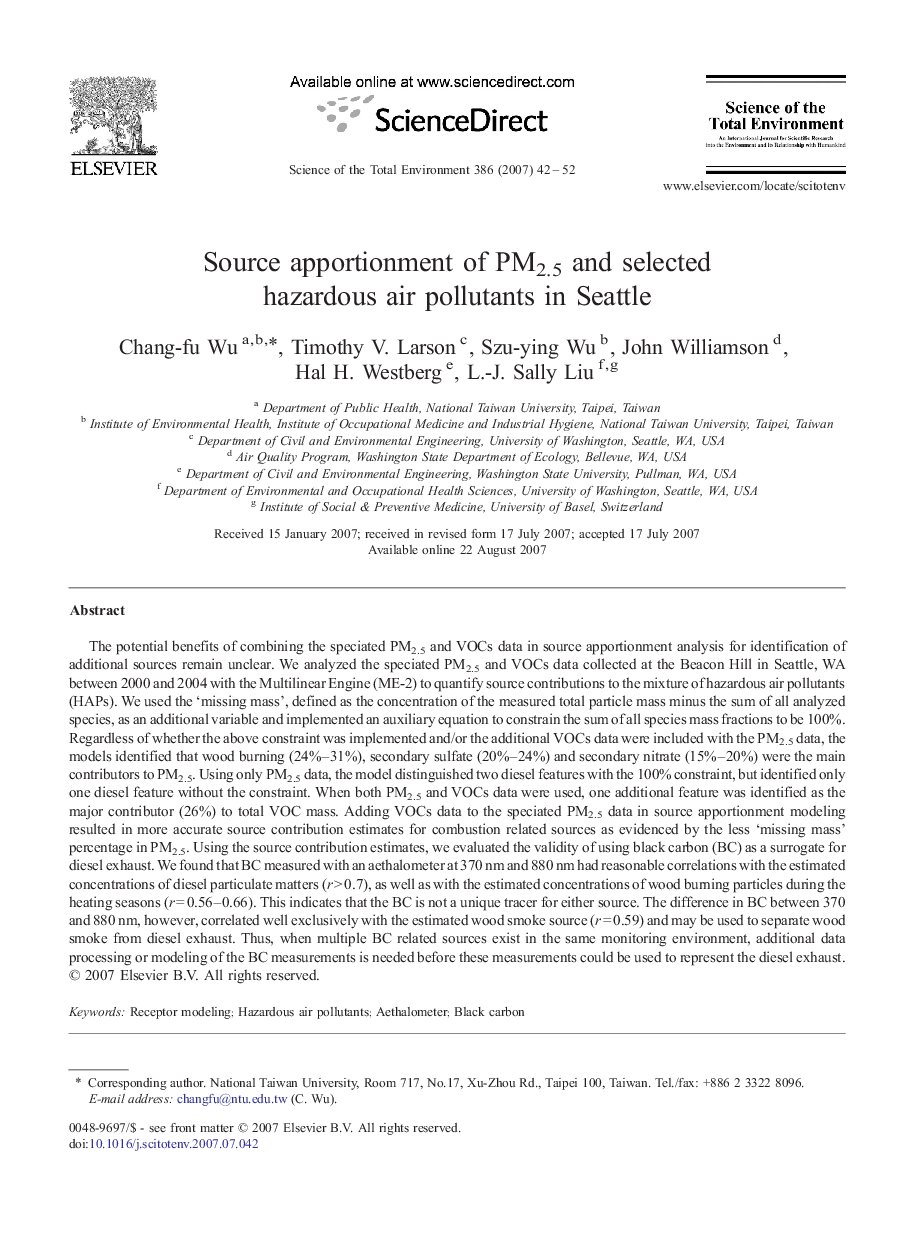| کد مقاله | کد نشریه | سال انتشار | مقاله انگلیسی | نسخه تمام متن |
|---|---|---|---|---|
| 4432901 | 1619941 | 2007 | 11 صفحه PDF | دانلود رایگان |

The potential benefits of combining the speciated PM2.5 and VOCs data in source apportionment analysis for identification of additional sources remain unclear. We analyzed the speciated PM2.5 and VOCs data collected at the Beacon Hill in Seattle, WA between 2000 and 2004 with the Multilinear Engine (ME-2) to quantify source contributions to the mixture of hazardous air pollutants (HAPs). We used the ‘missing mass’, defined as the concentration of the measured total particle mass minus the sum of all analyzed species, as an additional variable and implemented an auxiliary equation to constrain the sum of all species mass fractions to be 100%. Regardless of whether the above constraint was implemented and/or the additional VOCs data were included with the PM2.5 data, the models identified that wood burning (24%–31%), secondary sulfate (20%–24%) and secondary nitrate (15%–20%) were the main contributors to PM2.5. Using only PM2.5 data, the model distinguished two diesel features with the 100% constraint, but identified only one diesel feature without the constraint. When both PM2.5 and VOCs data were used, one additional feature was identified as the major contributor (26%) to total VOC mass. Adding VOCs data to the speciated PM2.5 data in source apportionment modeling resulted in more accurate source contribution estimates for combustion related sources as evidenced by the less ‘missing mass’ percentage in PM2.5. Using the source contribution estimates, we evaluated the validity of using black carbon (BC) as a surrogate for diesel exhaust. We found that BC measured with an aethalometer at 370 nm and 880 nm had reasonable correlations with the estimated concentrations of diesel particulate matters (r > 0.7), as well as with the estimated concentrations of wood burning particles during the heating seasons (r = 0.56–0.66). This indicates that the BC is not a unique tracer for either source. The difference in BC between 370 and 880 nm, however, correlated well exclusively with the estimated wood smoke source (r = 0.59) and may be used to separate wood smoke from diesel exhaust. Thus, when multiple BC related sources exist in the same monitoring environment, additional data processing or modeling of the BC measurements is needed before these measurements could be used to represent the diesel exhaust.
Journal: Science of The Total Environment - Volume 386, Issues 1–3, 1 November 2007, Pages 42–52